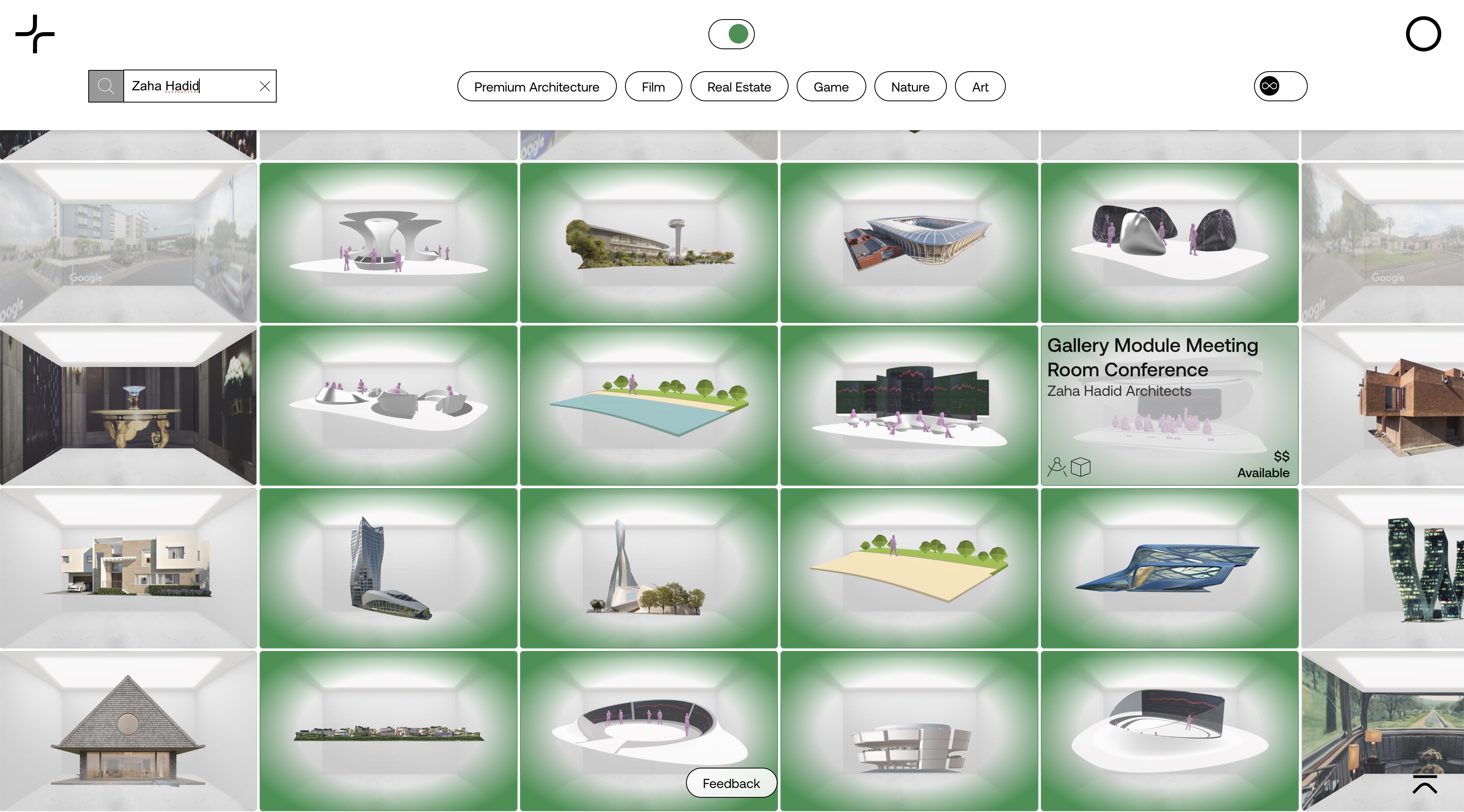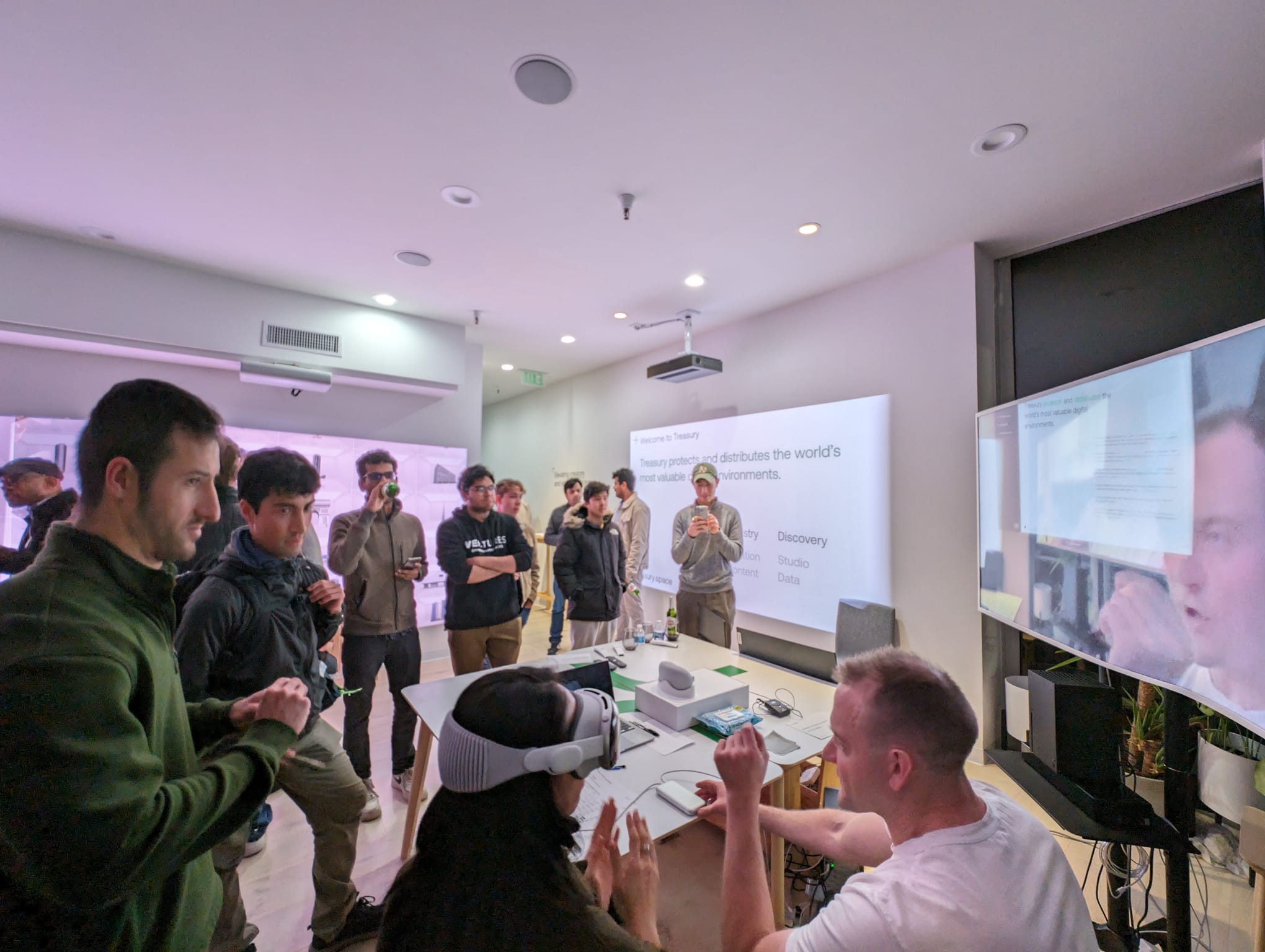Treasury Spatial
Marketplace Platform Launch
Challenge & Context
In 2022, Treasury—a pre-seed spatial computing startup backed by Gradient (Google AI fund) and co-founded with Zaha Hadid Architects—faced the formidable challenge of building a multi-sided marketplace for premium licensed 3D environments from the ground up. The key challenges included:
- Creating a new category at the intersection of design, architecture, and spatial computing
- Building critical mass on both supply and demand sides of the marketplace simultaneously
- Establishing industry credibility without substantial marketing resources
- Developing ecosystem connections across siloed professional communities
- Balancing vision with practical implementation in a pre-product environment
Before my involvement, Treasury had secured initial funding and established a compelling vision but lacked the operational infrastructure, industry relationships, and platform content necessary to launch a viable marketplace. The spatial computing landscape was fragmented, with no single player successfully bridging the worlds of premium architectural design and emerging spatial technologies.
We needed to build more than a platform—we needed to establish an entirely new ecosystem connecting historically disconnected professional communities.

Treasury's Discovery Engine.

Treasury Discovery Engine scene listing page.
Strategic Approach
I developed a comprehensive ecosystem strategy that leveraged limited resources to maximize impact:
1. Content Acquisition Strategy
- Designed and implemented a methodical approach to seed the marketplace with high-quality 3D assets
- Created a structured taxonomy for 16,000 potential scenes to enable effective discovery
- Established quality standards and curation principles to maintain premium positioning
2. Community Engagement Framework
- Developed targeted programming to connect creators, builders, and technology providers
- Conceptualized value-exchange mechanisms to incentivize early platform participation
- Authored comprehensive whitepaper establishing the foundation for spatial tech ecosystem development
3. High-Impact Event Series
- Designed two complementary event formats targeting different segments of the ecosystem:
- Sessions: Panel discussions featuring industry leaders from companies including Zaha Hadid Architects, Epic Games, Autodesk, Amazon Web Services (AWS), Wilson Sonsini, Midjourney, and Industrial Light and Magic
- Demos: Hands-on showcases of the Treasury platform and spatial buidlers' projects with qualified participants
- Implemented comprehensive event operations across San Francisco and London locations

Day One: an Apple Vision Pro demo held in San Francisco, Winter 2024.
Quantifiable Results
- Pipeline Development: Built relationships with 120+ potential partners including major architecture firms, technology companies, and content creators
- Platform Seeding: Developed catalog framework for 16,000 scenes to enable marketplace launch
- Event Success: Consistently delivered high-caliber events reaching 200 attendees for London sessions and 70-80 in San Francisco
- Fundraising Support: Contributed to securing a $400K seed extension through strategic relationship development
- Brand Positioning: Successfully associated Treasury with industry leaders through event programming featuring executives from Zaha Hadid Architects, Epic Games, Autodesk, Bentley Systems, Amazon Web Services (AWS), Wilson Sonsini, Midjourney, and Industrial Light and Magic
Implementation
Working in a startup environment with limited resources required creative approaches to execution:
- Resource Optimization: Maximized impact of limited budget through strategic partnerships and relationship-based approaches
- Cross-Functional Leadership: Seamlessly moved between high-level strategy and hands-on implementation
- Stakeholder Management: Navigated complex dynamics between technical teams, founders, investors, and external partners
- Crisis Management: Maintained operational continuity through multiple funding challenges and strategic pivots
The most critical implementation challenge was translating visionary concepts into tangible infrastructure and processes. By establishing systematic approaches to catalog management, event production, and partnership development, I created the operational foundation necessary for marketplace launch.
Innovation Elements
The Treasury approach incorporated several innovative elements:
- Ecosystem-First Strategy: Rather than focusing solely on platform development, we recognized that ecosystem development was the prerequisite for marketplace success
- Event-Based Growth Model: Leveraged high-profile events as both relationship-building and platform testing opportunities
- Cross-Disciplinary Community Development: Created bridges between previously siloed professional communities (architecture, gaming, VR/AR, enterprise)
Stakeholder Management
The Treasury ecosystem involved complex stakeholder relationships requiring careful management:
- Founder Dynamics: Balanced visionary thinking with practical implementation timelines
- Technical Partners: Coordinated with development teams across multiple time zones and technical specialties
- Content Partners: Established relationships with premium content creators including major architectural firms
- Industry Influencers: Cultivated relationships with key opinion leaders to participate in events and platform pilots
One of the most challenging aspects was maintaining stakeholder alignment through several strategic pivots and resource constraints. This required developing a communication strategy that maintained enthusiasm while managing expectations appropriately.
Lessons & Insights
This experience provided valuable insights about building platforms and ecosystems in emerging technology categories:
- Community Before Platform: The most successful approach was focusing on community building before attempting to scale the technology platform
- Strategic Resource Allocation: In resource-constrained environments, focusing on high-leverage activities (like strategic events) yielded better results than attempting to build everything at once
- Operational Foundation: Even visionary concepts require robust operational processes to succeed—establishing these early was crucial
- Management During Uncertainty: Startup environments require comfort with ambiguity and the ability to maintain momentum through challenging periods
- Cross-Functional Leadership: The ability to move between strategic vision and tactical implementation was essential for success
In the end, this experience wasn't just about building a marketplace—it was about establishing the foundations for an entirely new category of digital spatial experiences. While the startup environment presented significant challenges, it provided unparalleled opportunities to develop frameworks, relationships, and insights that will shape the future of spatial computing.